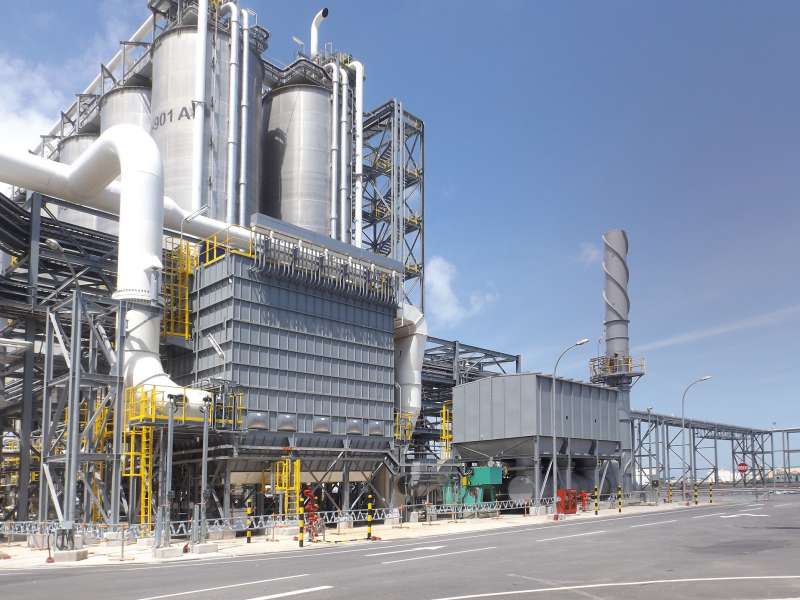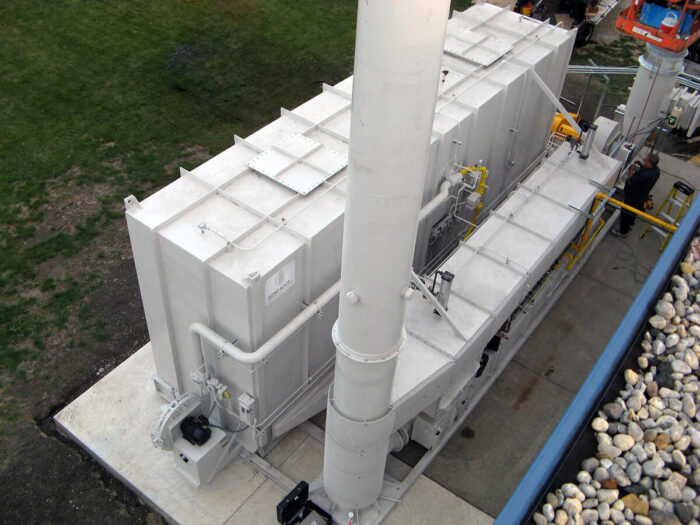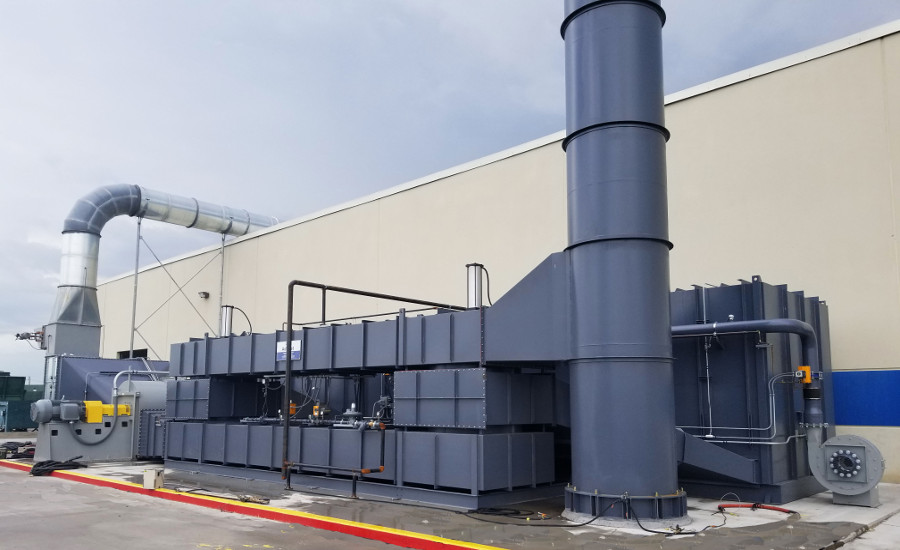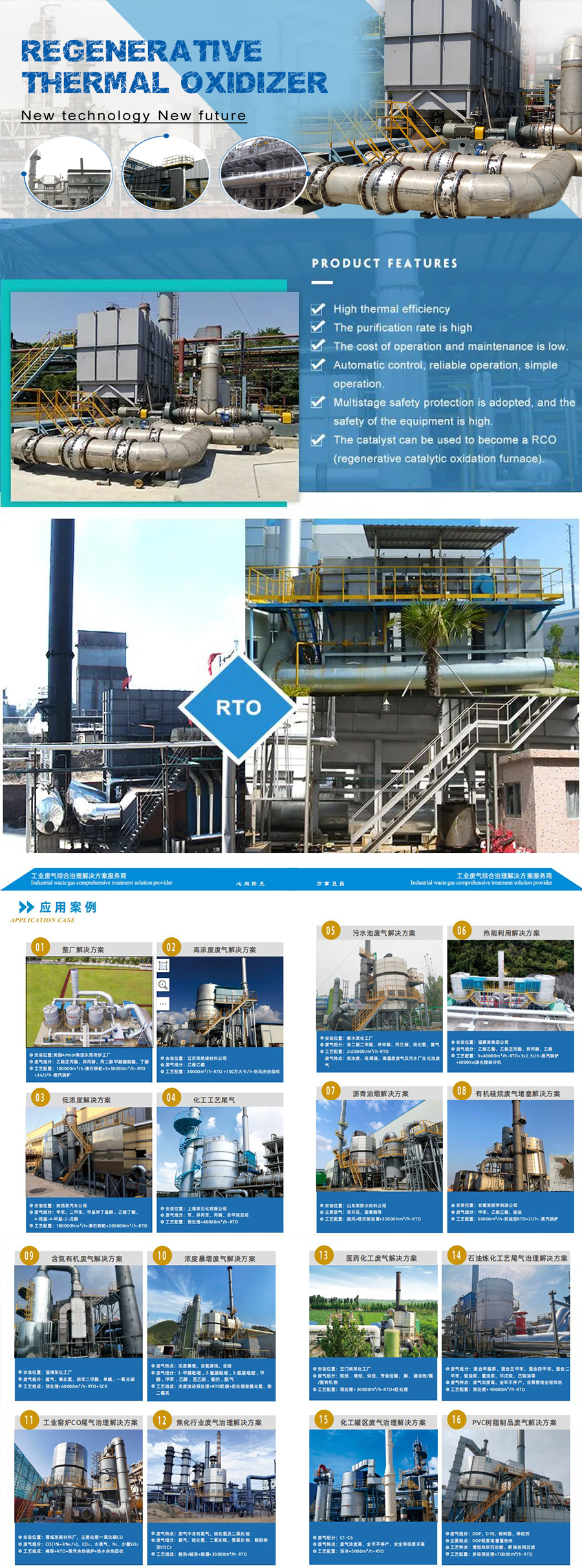Maklumat Asas.
taip
Instrumen Pemantauan Alam Sekitar
Fungsi Utama
Penyingkiran Gas Sisa
Permohonan
Industri Kimia
Jenama
Raidsant
Kecekapan Bersih
99.8%
keadaan
baru
Tanda dagangan
Raidsant
Pakej Pengangkutan
Filem Dibalut
asal usul
ZheJiang China
Penerangan Produk
HangZhou Raidsant Machinery Co.;,; Ltd.; mengambil jurusan dalam membangunkan dan mengeluarkan mesin pelletizing penyejuk serbuk inovatif dan mesin rawatan gas sisa industri yang berkaitan.; Dengan sejarah pengeluaran hampir 20 tahun,; kami mempunyai pasaran yang baik di lebih daripada 20 wilayah di China,; dan beberapa produk kami telah dieksport ke Arab Saudi, Singapura, Mexico,; Brazil,;Sepanyol,; Amerika,; Rusia dan Korea,; dan lain-lain;
Spesifikasi:;
* Lebih padat daripada kemudahan sedia ada
* Kos operasi rendah
* Jangka hayat kemudahan yang panjang
* Tiada perubahan tekanan
Tujuan:;
Sistem penjimatan tenaga yang membakar sebatian organik meruap (VOC); dan sisa gas dengan menggunakan haba,; dan ia mengumpul lebih 99.;8% haba buangan gas ekzos dengan menggunakan bahan penjana semula seramik (mangkin); dengan luas permukaan yang besar dan kehilangan tekanan rendah.;
Permohonan:;
1.; Proses pengeringan mengecat
2.; proses percetakan logam
3.; proses pengeringan gentian
4.; proses pita pelekat
5.; proses rawatan sisa
6.; proses pembuatan semikonduktor
7.; asap,; proses kuih-muih dan membakar
8.; proses petrokimia,;
9.; proses pembuatan ubat dan makanan,;
10.; proses penjanaan VOC yang lain
Kelebihan:;
* Lebih padat daripada kemudahan sedia ada
* Tiada perubahan tekanan
* Kadar pemulihan haba tinggi (lebih 95%);
* Rawatan VOC yang sempurna (lebih 99.;8%);
* Jangka hayat kemudahan yang panjang
* Kos operasi rendah
* Boleh dibuat dalam bulatan atau segi empat
Penerangan Umum dan Ciri:;
1.; Prinsip operasi
Kaedah pengendalian yang menukar nyahcas secara berterusan dengan memutarkan Injap Putar
2.; Perubahan Tekanan Proses
Tiada perubahan tekanan kerana arah angin berubah mengikut susunan mengikut putaran Injap Putar
3.; Kos Pelaburan
Sekitar 70% daripada Jenis Katil
4.; Ruang Pemasangan
Ia adalah kapal tunggal jadi ia padat dan memerlukan ruang pemasangan yang kurang.;
5.; Penyelenggaraan
Mudah untuk menyelenggaranya kerana Rotary Valve adalah satu-satunya 1 bahagian yang bergerak.;
Bahagian pengedap Rotary Valve jarang haus kerana ia berputar pada kelajuan rendah.;
6.; Kestabilan
Tiada risiko dalam proses kerana ia sentiasa dibuka walaupun Rotary Valve menghadapi masalah.;
7.; Kecekapan Rawatan
Kecekapan rawatan dikekalkan kerana bahagian pengedap jarang haus walaupun ia dikendalikan untuk masa yang lama.;
Alamat: No.3, Jalan Tengah Zhenxin, Zon Pembangunan Ekonomi, HangZhou, ZheJiang
Jenis Perniagaan: Pengeluar/Kilang, Syarikat Perdagangan
Julat Perniagaan: Bahan Kimia, Elektrik & Elektronik, Jentera Pembuatan & Pemprosesan, Keselamatan & Perlindungan
Pensijilan Sistem Pengurusan: ISO 9001
Produk Utama: Pelletizer, Flaker, Pastillator, Granulator, Chemical Pelletizer, Vocs
Pengenalan Syarikat: HangZhou Raidsant Machinery Co., Ltd., sebelum ini dikenali sebagai Kilang Jentera Plastik HangZhou Xinte mengambil jurusan dalam menghasilkan jentera kitar semula plastik yang inovatif. Dengan pengalaman hampir 20 tahun, kami mempunyai pasaran yang baik di 20 wilayah di China, dan beberapa produk kami telah dieksport ke Indonesia, Rusia dan Vietnam, dsb. Produk utama kami termasuk DZ Type Pastillator, barisan kitar semula tayar sisa, Big Caliber Plastic Talian kitar semula mesin pencincang paip, mesin salutan timah penyepuhlindapan berterusan, PET jenis QX, Talian basuh PE & badan kapal, penghancur kitar semula plastik SDP dua rel, pemotongan panas SJ unit pembuatan butiran, barisan produk tiub PVC (cinquefoil), barisan produk bahan PVC berbentuk ganjil untuk pintu dan tingkap, barisan produk butiran dalam air dan Mesin pencincang untuk plastik dan kitar semula. Kami memperoleh 5 paten teknikal.
Syarikat kami memberi penekanan kepada pembinaan semula teknikal, mengimport teknologi canggih dari dalam dan luar negara, dan membangunkan produk baharu secara berterusan. Prinsip kami adalah mencabar untuk kualiti tinggi, menawarkan produk terbaik. Kami sedang berusaha untuk merealisasikan slogan kami. Memuaskan pelanggan kami adalah usaha kami yang kekal.
Kami sedang mencari pelanggan atau ejen luar negara. Jika anda berminat dengan cadangan kami, sila beritahu kami produk mana yang paling mungkin menarik minat anda atau pelanggan anda. Kami sepatutnya sangat berterima kasih jika anda memberi kami beberapa idea tentang prospek pasaran untuk produk kami. Kami berharap untuk mendengar maklumat yang menggalakkan daripada anda tidak lama lagi! Adalah menjadi matlamat kami bahawa kami berharap kami dapat membina hubungan yang baik dengan anda sekarang atau dalam masa terdekat. Sila jangan teragak-agak untuk menghubungi kami jika anda mempunyai sebarang pertanyaan atau permintaan.
Kami juga mengalu-alukan kedatangan anda ke syarikat kami untuk membincangkan perniagaan dan berunding dengan kami. Untuk meluaskan lagi pasaran dan pelanggan kami, syarikat kami mengalu-alukan pelanggan dari dalam dan luar negara dalam isyarat jenama baharu berdasarkan konsep pengurusan baharu sepenuhnya—kualiti, penghormatan, perkhidmatan. Kami sedang mencari sistem kualiti pengurusan ISO 90001 untuk memenuhi keperluan pelanggan kami!

Are there any incentives or grants available for installing regenerative thermal oxidizers?
Yes, there are various incentives and grants available that can help offset the cost of installing regenerative thermal oxidizers (RTOs) and other emission control technologies. These incentives are typically offered by government agencies at the local, regional, and national levels to promote environmental sustainability, air quality improvement, and compliance with emissions regulations. However, the availability and specific details of these incentives may vary depending on the location and the specific program.
Here are some examples of incentives and grants that may be available:
- Energy Efficiency Grants: Many government agencies and utility companies offer grants and financial incentives to encourage energy efficiency measures, including the installation of energy-efficient equipment like RTOs. These grants can help offset a portion of the installation costs and may be based on factors such as energy savings, reduction in greenhouse gas emissions, or specific environmental objectives.
- Environmental Grant Programs: Some governmental organizations or environmental foundations provide grants specifically targeted at reducing emissions and improving air quality. These grants may be available for industries or businesses that invest in emission control technologies, such as RTOs, to help them comply with regulations and improve their environmental performance.
- Tax Incentives and Credits: Certain jurisdictions offer tax incentives or credits to businesses or industries that invest in environmentally friendly technologies. These incentives can significantly reduce the overall cost of installing an RTO. Examples include tax credits for energy-efficient equipment, accelerated depreciation allowances, or exemptions from sales tax on eligible equipment purchases.
- Industry-Specific Programs: Some industries or sectors may have specific grant programs or incentives tailored to their unique environmental challenges. These programs may provide financial assistance for emission control projects, including the installation of RTOs, within those industries.
- Research and Development Funding: Government agencies or research organizations often provide funding opportunities for the development and implementation of innovative emission control technologies. Businesses or research institutions involved in developing advanced RTO designs or improving RTO efficiency may be eligible for research grants or funding support.
To explore the availability of incentives and grants for installing RTOs, it is recommended to contact local environmental agencies, energy efficiency programs, or business development organizations. These entities can provide information on specific incentive programs, eligibility criteria, application procedures, and any deadlines or limitations associated with the grants.
It’s important to note that incentive programs may change over time, and their availability may depend on factors such as funding allocations and government policies. Therefore, it is advisable to stay updated with the latest information and consult with relevant authorities to determine the current incentives available for installing RTOs.

Are regenerative thermal oxidizers suitable for controlling emissions from printing presses?
Yes, regenerative thermal oxidizers (RTOs) can be suitable for controlling emissions from printing presses. Printing presses can emit volatile organic compounds (VOCs) and other air pollutants during the printing process, which need to be properly controlled to comply with environmental regulations and ensure air quality. Here are some key points regarding the suitability of RTOs for controlling emissions from printing presses:
- Kawalan pelepasan: RTOs are designed to achieve high destruction efficiencies for VOCs and hazardous air pollutants (HAPs). These pollutants are oxidized within the RTO at high temperatures, typically above 95% efficiency, converting them into carbon dioxide (CO2) and water vapor. RTOs effectively control and reduce emissions from printing presses.
- Compatibility: RTOs can be integrated into the exhaust system of printing presses, capturing and treating the emissions before they are released into the atmosphere. The RTO is typically connected to the exhaust stack of the printing press, allowing the VOC-laden air to pass through the oxidizer for treatment.
- High Flow Rates: Printing presses can generate significant exhaust volumes due to the printing process. RTOs are designed to handle high flow rates and can accommodate the varying exhaust volumes of printing presses. This ensures effective treatment of emissions even during peak production periods.
- Kapasiti Terma: RTOs have the thermal capacity to handle the temperature variations in printing press emissions. The printing process can result in varying exhaust temperatures, and RTOs are designed to operate effectively within a wide range of temperature conditions.
- Energy Efficiency: RTO menggabungkan sistem pertukaran haba yang membolehkan pemulihan dan penggunaan semula tenaga haba. Penukar haba dalam RTO menangkap haba daripada gas ekzos yang keluar dan memindahkannya ke aliran udara atau gas proses masuk. Proses pemulihan haba ini meningkatkan kecekapan tenaga keseluruhan sistem dan mengurangkan keperluan untuk penggunaan bahan api tambahan.
- Pematuhan dengan Peraturan: Printing press emissions are subject to regulatory requirements for air quality and emissions control. RTOs are capable of achieving the necessary destruction efficiencies and can help printing press operators comply with environmental regulations. The use of RTOs demonstrates a commitment to sustainable practices and responsible management of air emissions.
It is important to note that the specific design and configuration of the RTO, as well as the characteristics of the printing press emissions, should be considered when implementing an RTO for a printing press application. Consulting with experienced engineers or RTO manufacturers can provide valuable insights into the proper sizing, integration, and performance requirements for controlling emissions from printing presses.
In summary, RTOs are a suitable technology for controlling emissions from printing presses, providing high destruction efficiencies, compatibility with printing press exhaust systems, handling high flow rates and temperature variations, energy efficiency through heat recovery, and compliance with environmental regulations.

Can regenerative thermal oxidizers reduce odor emissions?
Regenerative thermal oxidizers (RTOs) are effective in reducing odor emissions from industrial processes. While their primary purpose is to control and destroy volatile organic compounds (VOCs) and hazardous air pollutants (HAPs), they can also effectively mitigate odorous compounds.
Here’s how RTOs contribute to odor reduction:
- Oxidation of Odorous Compounds: RTOs operate at high temperatures, typically ranging from 1,400 to 1,800 degrees Fahrenheit (760 to 980 degrees Celsius). These elevated temperatures facilitate the complete oxidation of odorous compounds, breaking them down into harmless byproducts, such as carbon dioxide and water vapor. The thermal oxidation process ensures the destruction of odor-causing molecules.
- High Destruction Efficiency: RTOs are designed to achieve high destruction efficiencies, often exceeding 99%. This means that the vast majority of odorous compounds are effectively eliminated during the combustion process, resulting in a significant reduction in odor emissions.
- Retention Time: RTOs provide a sufficiently long retention time for the exhaust gases within the combustion chamber. This allows for thorough mixing and residence time necessary for the complete oxidation of odorous compounds. The extended contact time ensures that the odorous molecules have sufficient exposure to the high temperatures, resulting in their destruction.
- Control of VOCs: Many odorous compounds are also VOCs. By effectively controlling and destroying VOC emissions, RTOs indirectly reduce odor emissions as well. The comprehensive destruction of VOCs prevents their release into the atmosphere, thereby minimizing the associated odors.
- Monitoring and Optimization: Proper monitoring and optimization of RTO operation can further enhance odor reduction. By continuously monitoring the process parameters, such as temperature, airflow, and pollutant concentrations, adjustments can be made to optimize the performance of the RTO and ensure effective odor control.
It’s important to note that while RTOs are effective in reducing odor emissions, the specific odor compounds and their concentrations in the exhaust stream can influence the overall odor control efficiency. Additionally, proper design, operation, and maintenance of the RTO are crucial for achieving optimal odor reduction.

editor oleh Dream 2024-11-26
